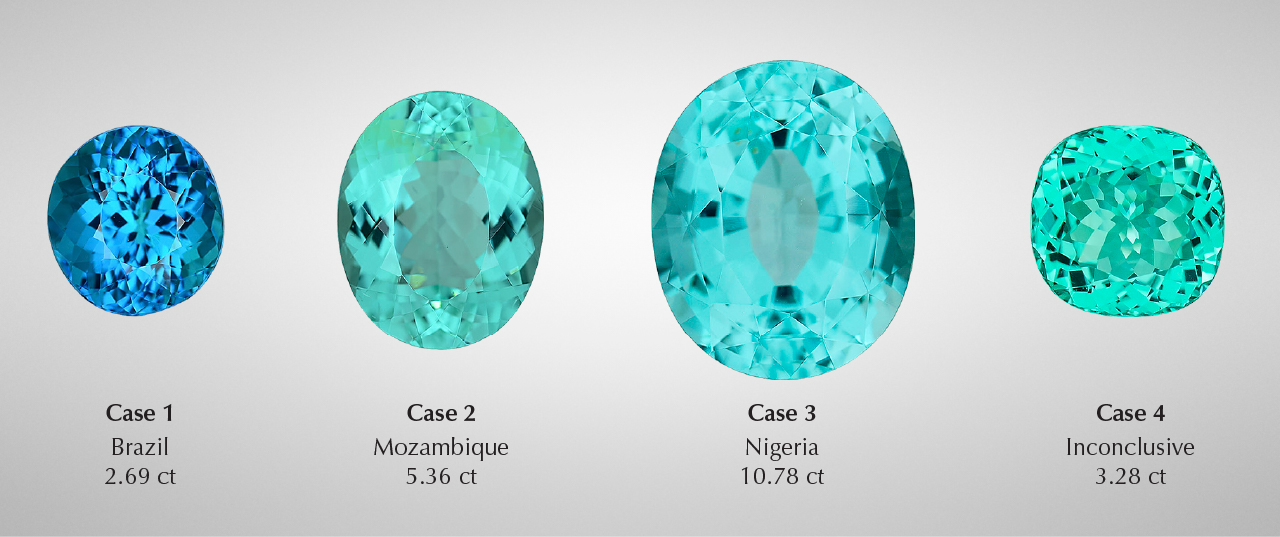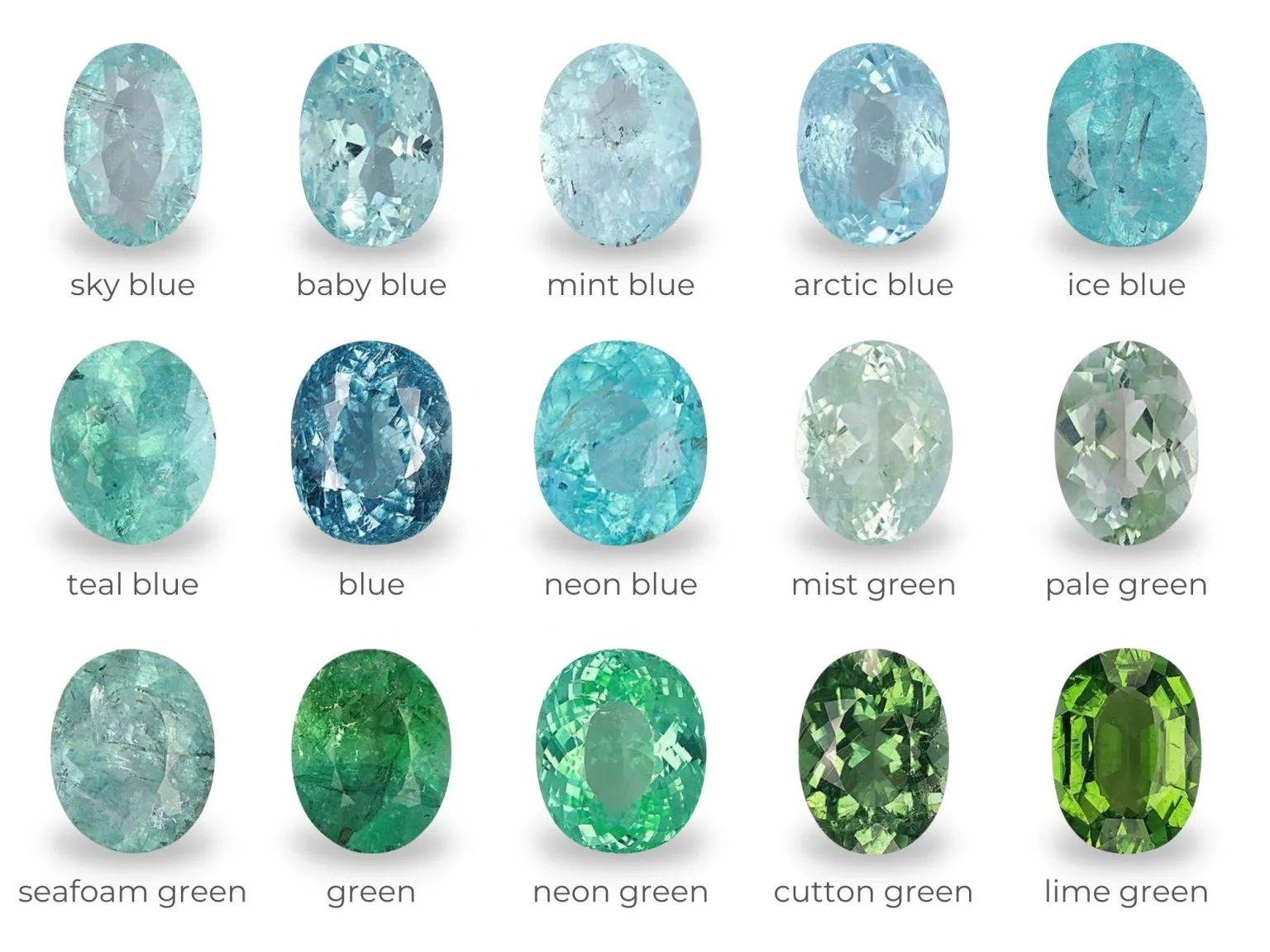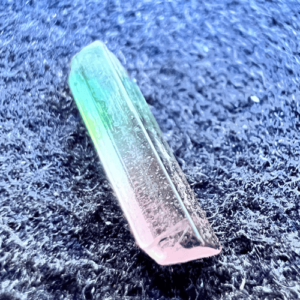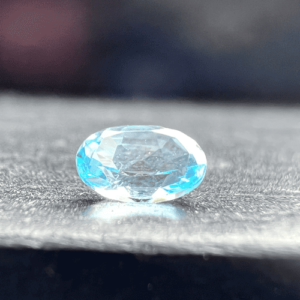Tourmaline Paraiba : Properties, Uses and Virtues
Paraíba Tourmaline: A Gem In The Azure Sky
Paraíba Tourmaline, a captivating variation on tourmaline, dazzles the world with its electrifying blue-green brilliance, winning the admiration of gem enthusiasts and jewellery connoisseurs alike. As we embark on an exploration of Paraíba, we’ll delve into its geological formation, the raw beauty of its crystals, its diverse global sources and its historical significance.
Discover the metaphysical properties, colour variations and extraordinary durability required to preserve this extraordinary gem.
Discover the secrets of natural Paraíba and familiarise yourself with the world of synthetic counterfeits, enabling you to tell the difference between genuine gems and imitations on the market.

Paraíba Tourmaline: Table of contents
- Paraíba Tourmaline Geological Formation
- Tourmaline Paraíba Brut – Raw Beauty Revealed
- Sources – The Worldwide Scope of Paraíba Tourmaline
- Historical Significance of Paraíba Tourmaline – Through the Ages
- Metaphysical properties of Paraíba Tourmaline – Illuminating energies
- Varieties of Paraíba Tourmaline
- Colors of Paraíba Tourmaline
- Durability and Wearability of Paraíba Tourmaline
- Paraíba Tourmaline Enhancements – Preserving Natural Beauty
- Synthetic Paraíba Tourmaline – La Nature en Laboratoire
- Imitations of Paraíba Tourmaline – Discerning the Authentic
- Caring for Paraíba Tourmaline – Preserving Natural Beauty
Paraíba Tourmaline Geological Formation
Paraíba Tourmaline, a mesmerising blue-green to bright blue variety of Elbaite, takes shape in specific geological conditions, mainly within pegmatite rocks. The combination of elements and trace elements during the formation of the gem creates its electrifying colours, making Paraíba a true wonder of nature.
Tourmaline Paraíba Brut – Raw Beauty Revealed
The raw beauty of Paraíba tourmaline crystals is a sight to behold. Gem aficionados and gemologists alike deeply admire the complex and exceptional structures exhibited by these crystals, which have a distinct prismatic shape adorned with 3, 6 or 9 faces.
In particular, Tourmaline’s elongated crystals have strong striations along their length, adding to their distinctive appeal.
Sources – The Worldwide Scope of Paraíba Tourmaline
The bewitching blue-green shades of Paraíba tourmaline are found in a variety of locations around the world. Notable sources of Paraíba include Brazil, Mozambique and Nigeria, each contributing to its distinct characteristics and blue-green hues, making it a highly sought-after gem worldwide.

Historical Significance of Paraíba Tourmaline – Through the Ages
The gem trade has labelled these gems “Paraíba tourmalines”, indicating their origin in the state of Paraíba. However, with the arrival of Nigerian and Mozambican tourmalines on the market, distinguishing the origin of the gems has become complex.
The Nigerian stones were called “paraíba-like” or “copper-bearing tourmalines” (cupriques), but mixing them with the Brazilian material made things unclear. The Mozambique discovery further complicated matters.
Despite the visual similarities, quantitative chemical analysis using advanced laboratory tests became necessary to determine their precise origin.
In response to the growing popularity and interest in these gems, the World Jewellery Confederation sanctioned the term “paraíba” as an acceptable trade name in 1999, reflecting the place where they were first discovered.
In 2006, the International Gem Industry Laboratory Conference and the International Laboratory Manual Harmonisation Committee (LMHC) officially recognised “Paraíba tourmaline” as a variety name, regardless of geographical origin.
This unifying term is now widely adopted by gem laboratories, emphasising that “Paraíba tourmaline” does not indicate the source of the gem, encompassing all copper tourmalines of the elbaite species under a universally recognised identity.
Metaphysical properties of Paraíba Tourmaline – Illuminating energies
Like other varieties of tourmaline, Paraíba is reputed to possess certain metaphysical properties. It is thought to promote feelings of joy, compassion and inner peace. Paraíba is also thought to stimulate creativity and improve communication, making it an ideal gem for those seeking inspiration and emotional balance.
Varieties of Paraíba Tourmaline
Paraíba tourmaline mainly has bewitching blue-green hues with varying saturations and tones, but no real variety.
Colors of Paraíba Tourmaline
The electrifying blues and greens of Paraíba tourmaline are its trademark, captivating all who gaze upon its brilliance. Its striking range of colours varies from vivid turquoise to electric green, radiating a captivating glow that is truly unrivalled. Unlike any other gem, Paraíba’s bewitching colour is attributed to the presence of copper and manganese in its crystalline structure.
Durability and Wearability of Paraíba Tourmaline
Paraíba tourmaline has excellent durability, scoring 7 to 7.5 on the Mohs scale. This remarkable hardness ensures that Paraíba jewellery remains resilient and brilliant, preserving its captivating charm through the ages.
Paraíba Tourmaline Enhancements – Preserving Natural Beauty
Paraíba tourmaline is celebrated in its natural state, but it is possible to find heat-treated stones, as the heat treatment will lighten the hue and transform the violet tones into blue. Laser drilling can be used to remove darker inclusions, however, this treatment is used sparingly to avoid diminishing the gem’s value.
Synthetic Paraíba Tourmaline – La Nature en Laboratoire
Synthetic tourmaline is notoriously difficult and expensive to create. In this case, synthetic tourmalines are rarely created. Most of the ‘synthetics’ on the market are simulants or artificial materials.
Imitations of Paraíba Tourmaline – Discerning the Authentic
Because of the exceptional appeal of Paraíba tourmaline, imitations can sometimes be found on the market, such as glass or synthetic beryl. Identifying genuine Paraíba gems requires the expertise of reputable gem dealers to guarantee authenticity and value.
Caring for Paraíba Tourmaline – Preserving Natural Beauty
To preserve the timeless beauty of Paraíba jewellery, handle it with care and avoid exposing it to harsh chemicals or sudden changes in temperature.
Clean them gently with soapy water and a soft brush, and store them separately to avoid scratches.
Professional cleaning and inspection are recommended periodically to maintain their captivating shine.


Leave a Reply
Want to join the discussion?Feel free to contribute!